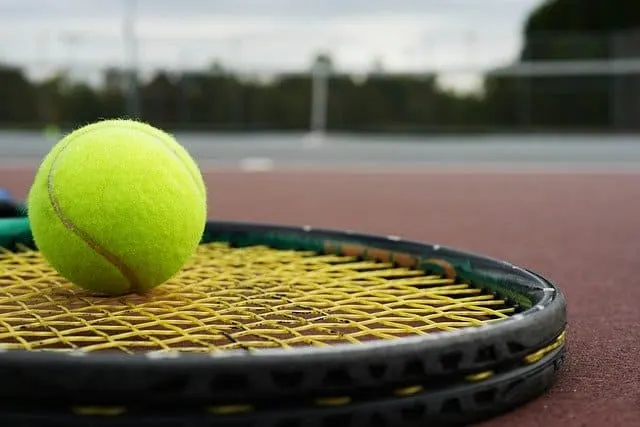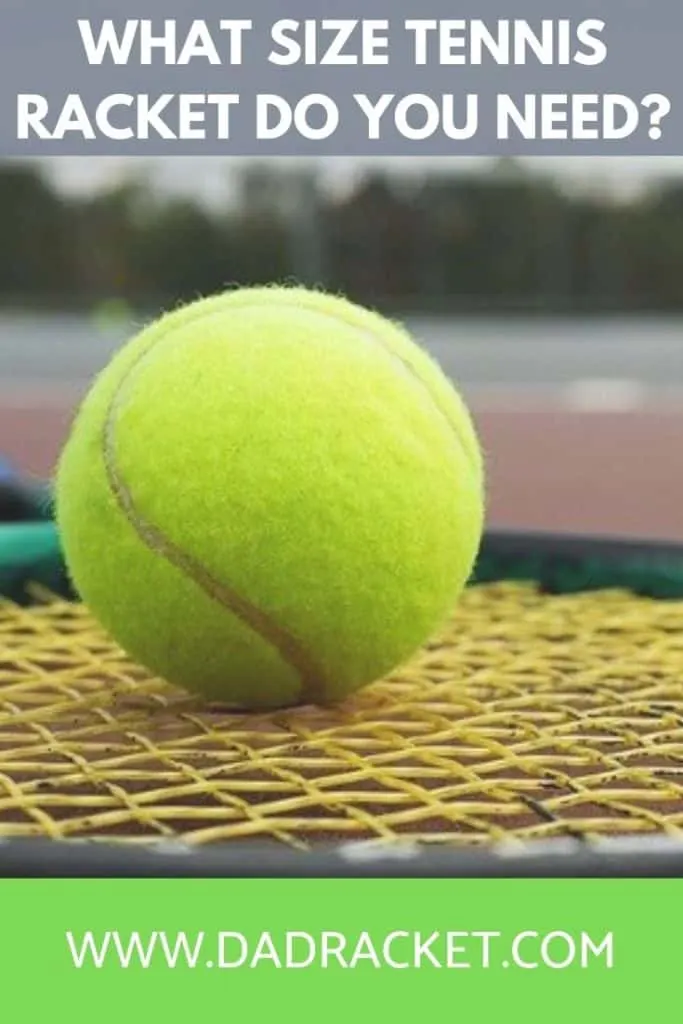
I’ve been playing tennis regularly for almost 3 years now and I believe I’m steadily improving month by month.
Although you obviously need the right technique to hit your shots effectively, the right tennis racket can make a difference in terms of the power, control, feel and spin you can generate.
I started off with a beginner Wilson tennis racket which had a large sweet spot for hitting my shots, but just over 2 years ago I bought a Mantis Pro 295 III, which has a smaller head size of 98 sq. inches.
For me, it’s certainly helped my game.
In this article, let’s take a look at what tennis racket size is best for your game, so you can narrow down your options if you’re thinking of buying a new one.

Is there a regulation tennis racket size?
Surprisingly racquets are allowed to be made from most materials.
The only restriction is the size of the racket.
As a rule, it can’t be longer than 29 inches including the handle or more than 12.5 inches wide.
The tennis strings have to be criss-crossed vertically and horizontally and the hitting area should be no more than 15.5 inches long and 11.5 inches wide.
The standard length for a tennis racket is 27 inches.
Chart – Tennis racket length
You can see from this poll over at the Tennis Warehouse that the vast majority of players have tennis rackets that are 27 inches long.

What is the best tennis racket head size?
The head size of a tennis racket can be a huge factor in determining how much power you can generate, and how much control you have on your shots.
Pros and cons of a larger head size
Larger head sizes are considered to be over 102 square inches. These have a larger sweet spot which means it’s easier to generate power on your shots. They are also more forgiving if you don’t hit the centre of the racket when you strike the ball.
This larger head size is ideal for:
- Beginners
- Older players
- Players who don’t have a powerful swing
You can even get oversize rackets up to 110 square inches for the head size, which can provide even more power on your shots.
The downside of a large head size is you have less control on your shots and less accuracy.
Pros and cons of a smaller head size
Tennis rackets with a head size of less than 100 square inches can be considered as having a smaller head size.
Playing with this type of racket offers you a lot more control on your shots, so you’ll find it easier to get the right depth and accuracy on your groundstrokes and have better touch and feel around the net.
The disadvantage is that you get less power, so you really have to be able to generate the power yourself when you strike the ball. Also, if you don’t strike the very centre of the racket, the smaller sweet spot means you can hit the frame, or just mishit it altogether.
A smaller head size is ideal for:
- Intermediate/advanced players.
- Players with fast and full swings, who have sufficient power on their shots naturally.

What head size do the pros use?
Most pros have a head size less than 100 square inches. As you can imagine, these are finally tunes athletes who have amazing muscle tone so they can generate a lot of the power themselves, and the smaller racket size will give them a lot of control on their shots.
One notable exception is Serena Williams who uses an oversize 104 square inch Wilson Blade tennis racquet.
What size tennis racket do I need?
A lot of tennis websites recommend having around 100 square inches if you’re a fairly competitive player.
My Mantis Pro 295 III has a head size of 98 square inches, and overall it’s just right for my game. I do fluff the occasional shot, but most of the time I’m happy how I strike the ball.
If you’re just starting out, definitely get a larger head size. Look for around 102-105 square inches, but try up to 110 square inches if you think you need even more power.
If you’ve a senior player who’s been playing for many years, it might make sense to invest in a larger head size racket to help you get more power on your shots.
However, if you believe you’ve reached an intermediate level, and you own a racket with larger head size already, it’s probably time to upgrade your racket and get a smaller head size.
You’ll love the extra control you can get on your shots!
Tennis racket size for kids
For kids, racket sizes are a little bit different.
Although the standard tennis racket length is 27 inches, this is too long for children.
Junior rackets are a bit shorter, with lengths of 19, 21, 23, 25 and 26 inches.
- 19 inches is suitable for players around 4 years old (or younger) who are 40 inches tall (or shorter)
- 21 inches is for children who are between 4-5 years old and 40-44 inches in height.
- 23 inches is for 6-8 year olds, who are 45-49 inches tall.
- 25 inches is for children who are 9-10 years old with a height of 50-55 inches.
- And 26 inches is for older children who are more than 10 years old and taller than 55 inches.
After this, teenagers should really be able to use a standard 27 inch racket.
Chart – Tennis racket head size
Here’s another poll from the Tennis Warehouse forum which shows that 95-102 inches is the most popular head size for players. It’s likely that most of players who use the forum are either of an intermediate or advanced standard.

Chart – Tennis racket grip size
You’ll also need to think about what grip size you want for your tennis racket. Most players have a grip size of 3 or L3, which is 4 3/8 inches. Some also opt for 4 or L4 which is better if you have slightly larger hands.
One thing to bear in mind is if you use an overgrip as this makes the racket grip slightly bigger.
Here’s some data from Tennis Warehouse confirming that L3 is the most popular grip size.

